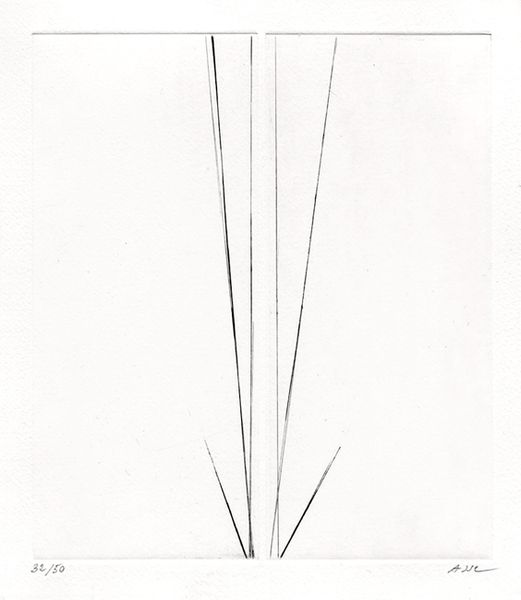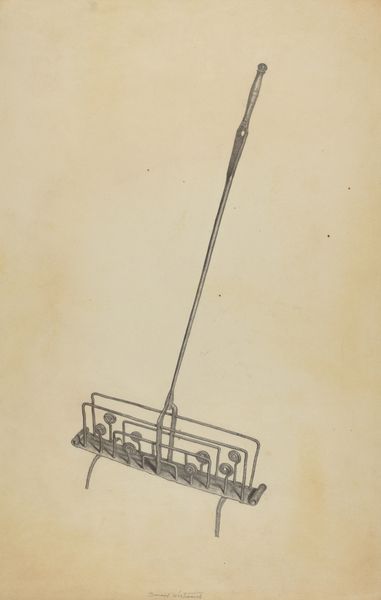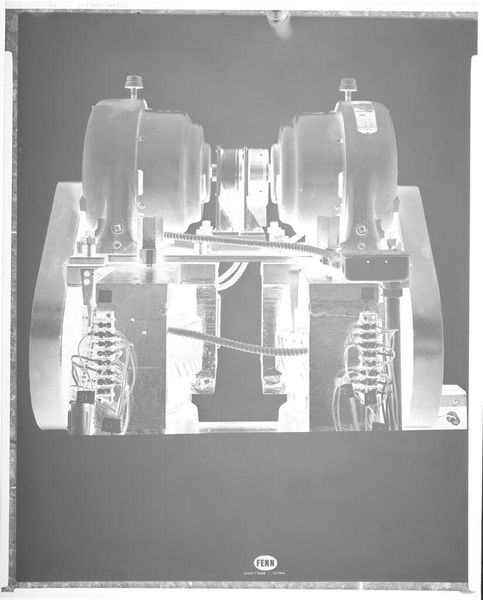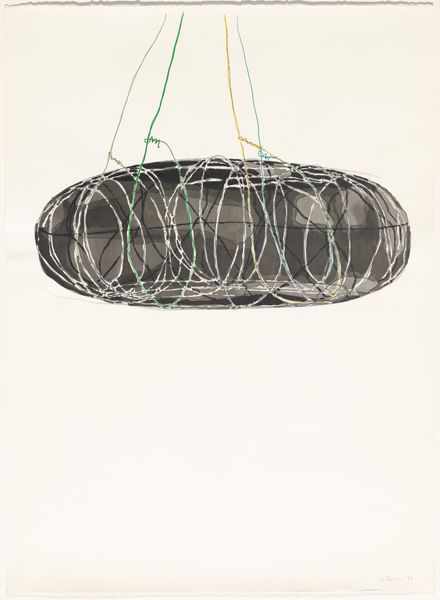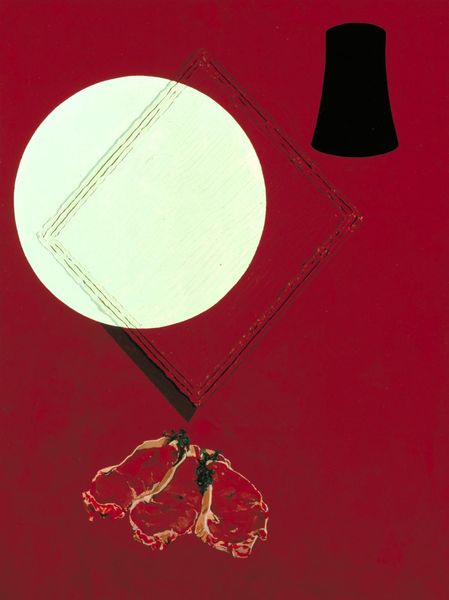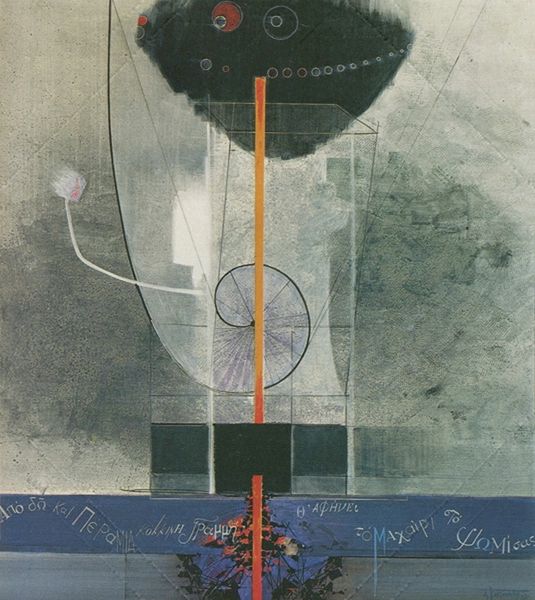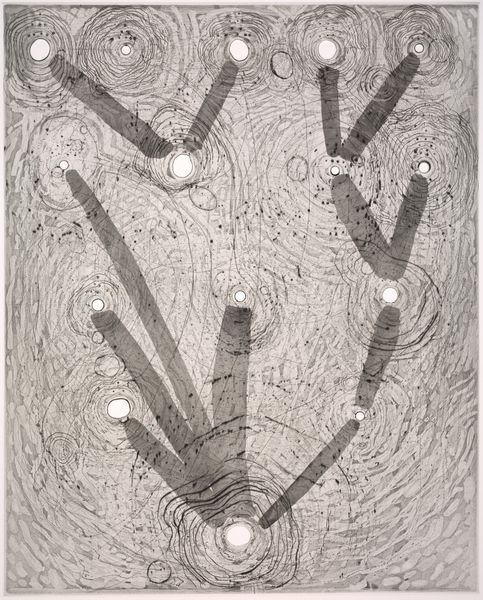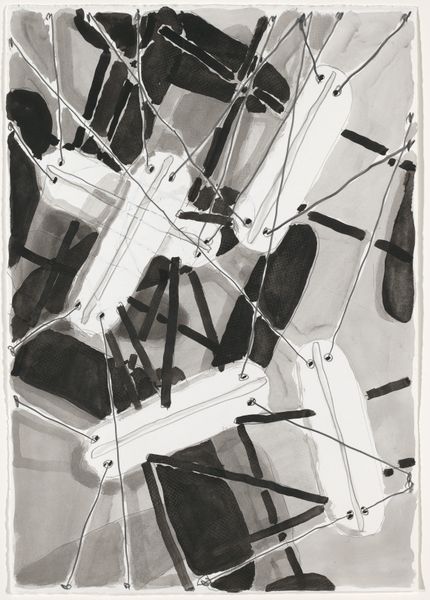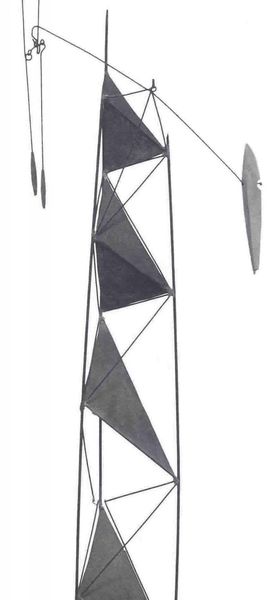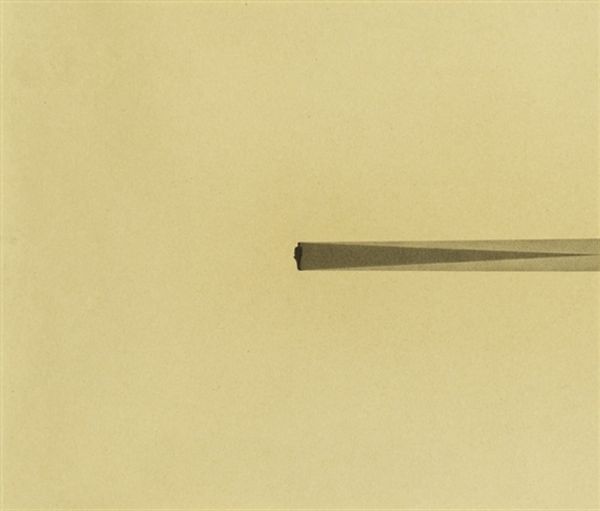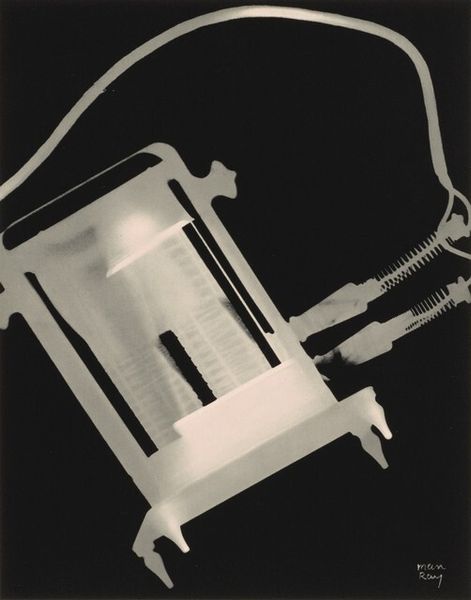
drawing
#
drawing
#
conceptual-art
#
geometric
Dimensions: sheet: 121.29 x 80.49 cm (47 3/4 x 31 11/16 in.)
Copyright: National Gallery of Art: CC0 1.0
Curator: Immediately, there’s this feeling of precariousness. Like the objects are floating or about to topple. The delicacy of the lines only adds to that sensation. Editor: That’s a keen observation. Let’s delve into this work. Here we have "Untitled (Can Study)," a drawing rendered by Al Taylor in 1994. His artistic practice involved everyday materials. The subject appears humble, but within the context of art history, there’s much to unpack. Curator: Humble, yes, but think about what "humble" actually signifies. Consider the gendered aspects, for example; we could question why we associate some subject matter as "feminine" by considering them to be smaller or less relevant. Editor: I understand the inclination, and the conceptualism is a useful method of inquiry, absolutely, however Taylor had a keen eye for elevating ordinary objects through considered arrangements and detailed observation, a key element that drove so much post-war art movements. Curator: I concede your point. Post-war American artists did often challenge societal norms, and the selection of commonplace objects questions mass consumption. There is a visual interplay too: are the floating lines a commentary on something beyond the material objects? The support almost renders a ghost or phantom of other dimensions around these stacked tin cans. Editor: That reminds us how Taylor often employed techniques that emphasized process. For example, in these suspended lines and overlapping can drawings we see visual echo effects; it reinforces a dialogue of spatial concerns of the everyday object as an element for philosophical interrogation. Curator: Exactly! It seems that he also plays on how a purely functional, everyday object carries many associations: consumption, accessibility, even waste. It really demands us to analyze this. Editor: Right, that makes it such an engaging and compelling drawing. Curator: Indeed. A deceptively simple sketch. Editor: Yes. An intersectional inquiry through these stacked cans.
Comments
No comments
Be the first to comment and join the conversation on the ultimate creative platform.
